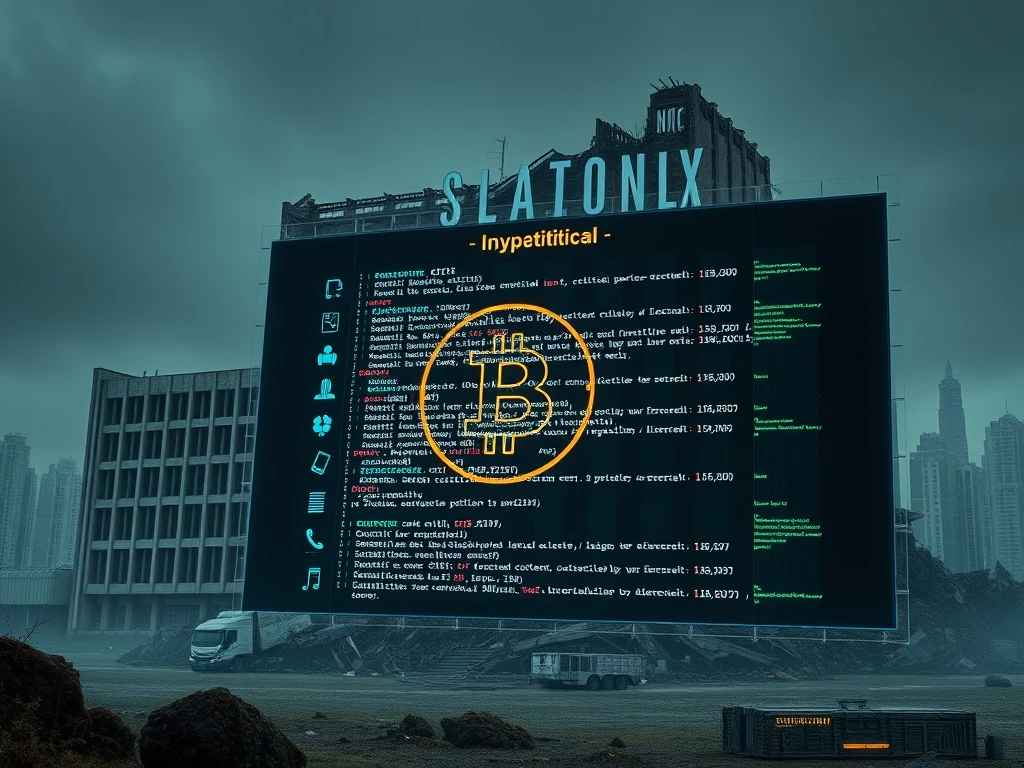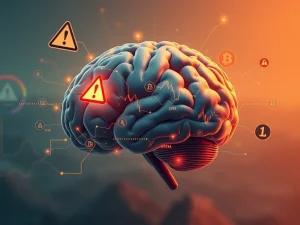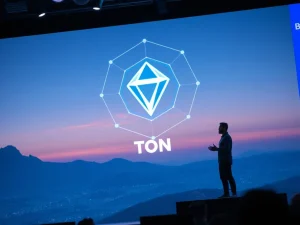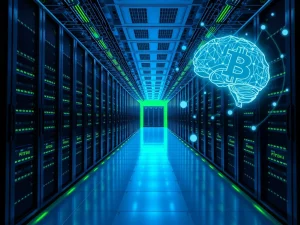Mt. Gox Catastrophe: AI Unveils Critical Security Flaws a Decade Later

The ghost of **Mt. Gox** continues to haunt the cryptocurrency world. A decade after its infamous collapse, the defunct exchange serves as a stark reminder of early **Bitcoin security** challenges. What if advanced **AI security** tools had existed then? This question gains new relevance as Mt. Gox’s former CEO, Mark Karpelès, leverages modern AI to conduct a fascinating post-mortem of the exchange’s original codebase, revealing critical vulnerabilities that led to its downfall.
AI Security Reveals Mt. Gox’s Fatal Flaws
Mark Karpelès, the former CEO of Mt. Gox, recently fed an early version of the exchange’s codebase into Anthropic’s Claude AI. This innovative experiment aimed to dissect the vulnerabilities present in 2011. The AI’s analysis delivered a startling verdict: the codebase was “critically insecure.” This groundbreaking insight comes years after the catastrophic events that reshaped the crypto landscape. It offers a new perspective on what transpired.
Karpelès shared his findings in a Sunday X post. He explained that he uploaded Mt. Gox’s 2011 codebase to Claude. Furthermore, he included various crucial data points. These included GitHub history, access logs, and data “dumps released by” the hacker. Source: Mark Karpelès. Claude AI’s detailed report characterized the 2011 codebase as a “feature-rich but critically insecure Bitcoin exchange.” This evaluation highlights a fundamental paradox. The platform offered advanced trading features yet lacked robust protection. Such a combination proved disastrous.
The AI acknowledged the founder’s technical prowess. “The developer (Jed McCaleb) demonstrated strong software engineering capabilities in terms of architecture and feature implementation, creating a sophisticated trading platform in just 3 months,” the analysis stated. However, this praise came with a significant caveat. “The codebase contained multiple critical security vulnerabilities that were targeted in the June 2011 hack.” Importantly, security improvements made between ownership transfer and the attack partially mitigated the impact. This suggests that even minor enhancements can play a crucial role in preventing worse outcomes.
The Initial Mt. Gox Takeover and Its Immediate Challenges
Karpelès acquired Mt. Gox from its founder, Jed McCaleb, in March 2011. He quickly took the reins of the Japan-based exchange. Just three months later, a major hack occurred. This incident saw 2,000 Bitcoin (BTC) drained from the platform. The rapid succession of events left little time for comprehensive due diligence. Karpelès openly admitted this oversight. “I didn’t get to look at the code before taking over; it was dumped on me as soon as the contract was signed (I know better now, due diligence goes a long way),” he commented on his X post. This candid reflection underscores the importance of thorough security audits during acquisitions, especially in nascent, high-stakes industries like cryptocurrency.
The immediate aftermath of the hack exposed the deep-seated flaws. These issues were present from the platform’s inception. Had modern **AI security** tools been available, they might have flagged these vulnerabilities instantly. This could have prompted necessary remediations before any transfer of ownership. The lack of such tools meant relying solely on human review. This often proves insufficient for complex systems. Early crypto platforms operated in an unregulated environment. This often meant security was an afterthought. The focus remained on functionality and rapid growth. This approach ultimately created fertile ground for exploits.
Understanding Early Crypto Exchange Hacks
Claude AI’s post-mortem provided a comprehensive breakdown of the Mt. Gox vulnerabilities. It identified several key weaknesses. These included a mix of code flaws and a severe lack of internal documentation. Furthermore, weak admin and user passwords contributed significantly to the breach. Critically, the retained account access of prior admins after the new ownership handover posed a grave risk. These factors combined to create a highly exploitable environment. Such issues were common in the early days of **crypto exchange hacks**.
The 2011 hack began with a major data breach. Karpelès’s WordPress blog account and some of his social media accounts were compromised. This initial breach served as a gateway to the exchange’s systems. “Contributing factors included: the insecure original platform, undocumented WordPress installation, retained admin access for ‘audits’ after ownership transfer, and a weak password for a critical admin account,” the analysis revealed. This chain of events illustrates how seemingly minor external breaches can cascade into catastrophic internal compromises, especially without proper network segmentation and access controls.
The AI’s analysis also highlighted that certain changes, both pre- and post-hack, “mitigated some attack vectors.” These improvements prevented the attack from becoming far worse. For instance, an update to a salted hashing algorithm significantly enhanced password protection. This made mass compromise more difficult. Developers also fixed an SQL injection hacking code in the main application. Furthermore, implementing “proper locking around withdrawals” was crucial. These proactive measures, though incomplete, limited the damage.
Bitcoin Security: Lessons from the Past
The partial effectiveness of these remediation efforts is noteworthy. “The salted hashing prevented mass compromise and forced individual brute forcing, but no hashing algorithm can protect weak passwords,” the analysis clarified. “The withdrawal locking prevented the more severe outcome of tens of thousands of BTC being drained via the $0.01 withdrawal limit exploit.” This shows that while technical fixes are vital, they cannot fully compensate for fundamental human errors like weak password choices. The incident became a foundational lesson in **Bitcoin security**.
The report concluded: “This codebase was targeted in a sophisticated attack in June 2011. Security improvements had been made in the 3 months since ownership transfer, which affected the attack outcome. This incident demonstrates both the severity of the original codebase’s vulnerabilities and the partial effectiveness of remediation efforts.” While AI could have identified specific coding flaws, the root cause was systemic. It involved poor internal processes, weak passwords, and a critical lack of network segmentation. A blog breach should never threaten an entire exchange. This incident underscores that AI cannot prevent all human error, but it can certainly flag the vulnerabilities that human error creates.
Modern **Bitcoin security** relies heavily on automated tools. These tools perform continuous monitoring and vulnerability assessments. They identify potential threats before they escalate. Early exchanges lacked these sophisticated defenses. Consequently, they were easy targets for attackers. The Mt. Gox case served as a harsh wake-up call. It forced the nascent crypto industry to prioritize security. This shift was essential for its long-term viability. Today, exchanges invest heavily in multi-layered security protocols. They use advanced encryption, cold storage, and multi-factor authentication. These measures aim to prevent a repeat of past disasters.
Preventing Blockchain Vulnerabilities with AI
The Mt. Gox analysis sparks a crucial discussion: how can AI proactively prevent **blockchain vulnerabilities**? Today’s AI models are far more advanced than anything available in 2011. They can analyze vast amounts of code. They identify complex patterns and predict potential exploits. AI-powered tools now assist in smart contract audits. They monitor network anomalies. They even detect insider threats. This represents a significant leap forward in defensive capabilities. The integration of AI into cybersecurity frameworks is transforming how digital assets are protected.
Consider the potential applications of AI in preventing future **crypto exchange hacks**:
* **Automated Code Audits:** AI can scan millions of lines of code for common vulnerabilities like SQL injections, buffer overflows, and insecure direct object references, flagging them before deployment.
* **Real-time Anomaly Detection:** AI systems can continuously monitor network traffic and transaction patterns. They identify unusual activities that might indicate a breach or a fraudulent withdrawal attempt.
* **Predictive Threat Intelligence:** AI can analyze global cyber threat data to anticipate new attack vectors. This allows exchanges to implement proactive defenses.
* **Insider Threat Detection:** AI can identify suspicious behavior patterns among employees, such as unusual access to sensitive data or attempts to bypass security protocols.
* **Identity and Access Management:** AI can enforce robust access controls. It ensures that only authorized personnel have access to critical systems. It also revokes access automatically upon role changes.
While AI offers immense promise, it is not a silver bullet. Human oversight remains essential. AI tools require careful configuration and continuous training. They learn from new data and evolving threat landscapes. The combination of human expertise and AI capabilities creates the most resilient security posture. This hybrid approach addresses both technical flaws and human operational errors. The lessons from Mt. Gox highlight the critical need for such comprehensive strategies.
The Enduring Impact of Mt. Gox on the Market
Despite being defunct for over a decade, Mt. Gox continues to influence the market. Over the past couple of years, large sums of Bitcoin (BTC) have been repaid to creditors. This has generated significant potential selling pressure on the market. However, these feared mass sell-offs have largely not materialized. The protracted repayment process has allowed the market to absorb the releases gradually. This has prevented major disruptions. The careful handling of these repayments reflects a more mature crypto ecosystem. It demonstrates a greater awareness of market dynamics. This is a direct consequence of past incidents.
Ahead of the October 31 repayment deadline, the exchange holds approximately 34,689 BTC. The anticipation surrounding these repayments often creates market volatility. Traders closely watch these events. They try to predict their impact on Bitcoin’s price. The Mt. Gox saga serves as a historical case study. It teaches about market psychology and the ripple effects of major events. The ongoing repayments underscore the long tail of security breaches. They remind us that consequences can linger for many years. The crypto community remains vigilant. It learns from these historical events to build a more secure future. Magazine: Mysterious Mr Nakamoto author: Finding Satoshi would hurt Bitcoin. The next era of crypto belongs to decentralized markets. Editor’s Choice US Treasury chief Bessent says ‘substantial’ trade framework with China reached Bitcoin price starts $112K breakout as Fed rate-cut odds pass 98% Bitcoin flashing ‘rare’ top signal, Hayes tips $1M BTC: Hodler’s Digest, Oct. 19 – 25 Bitcoin treasuries can earn more Bitcoin, says Willem Schroé. Advertise with us.









